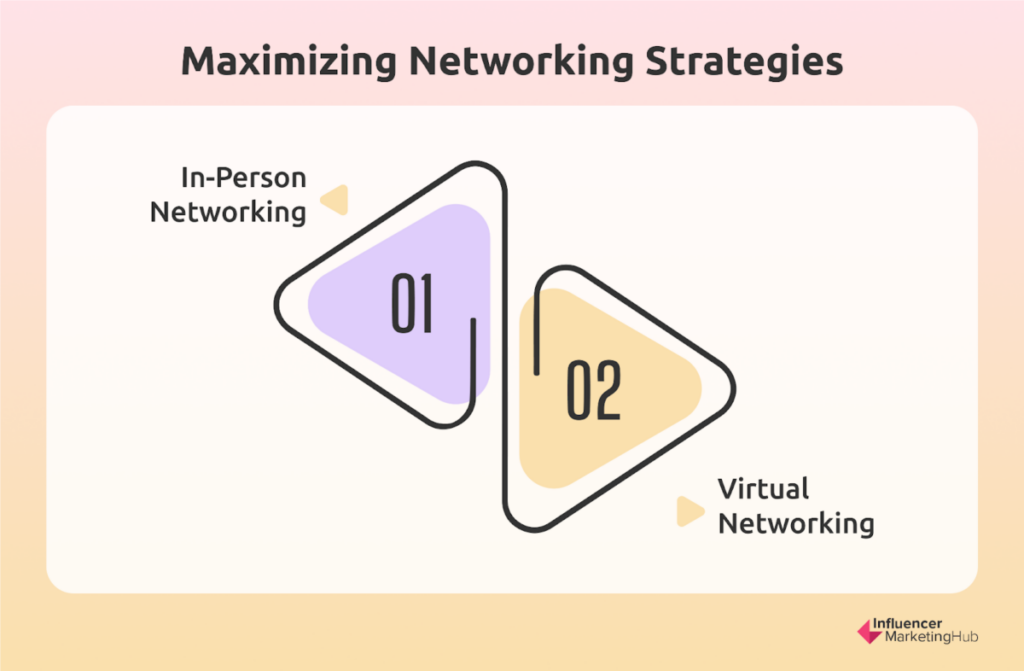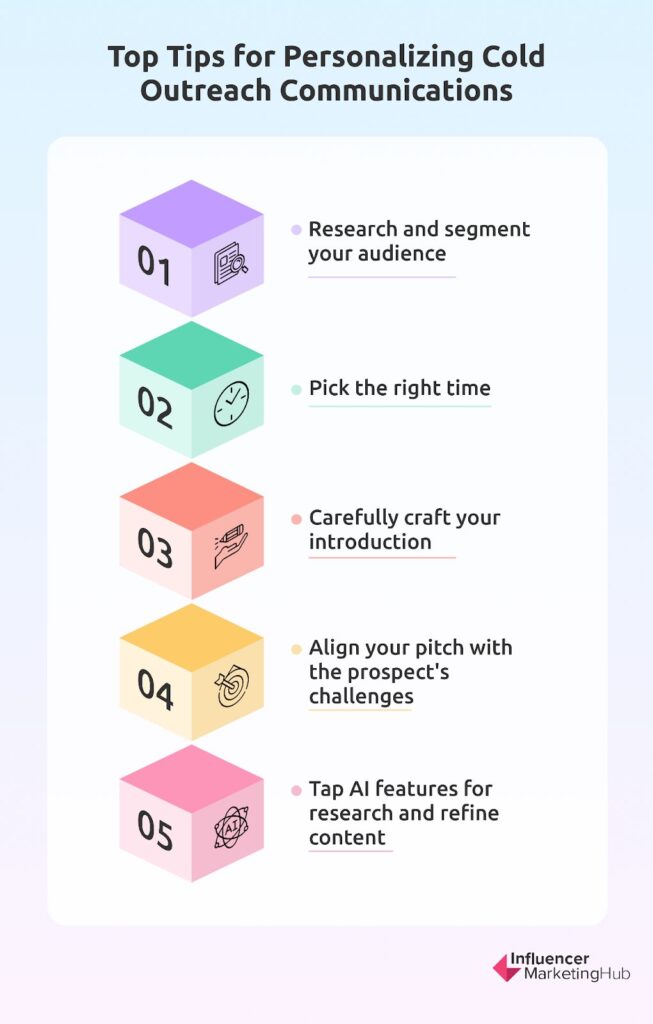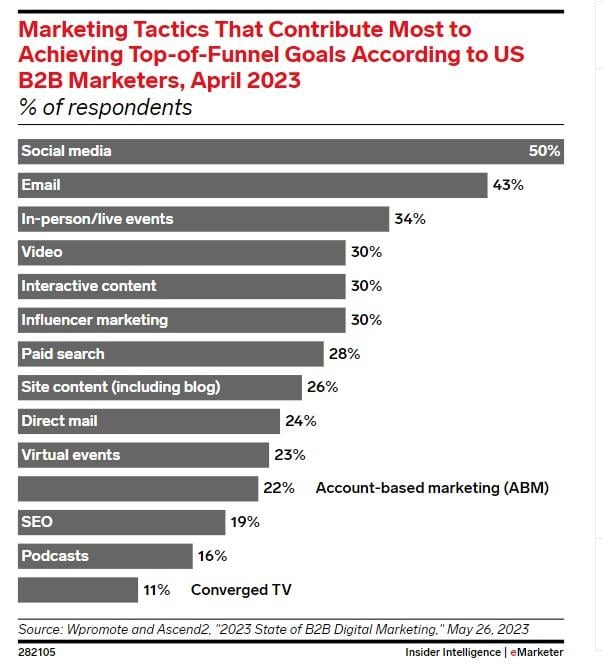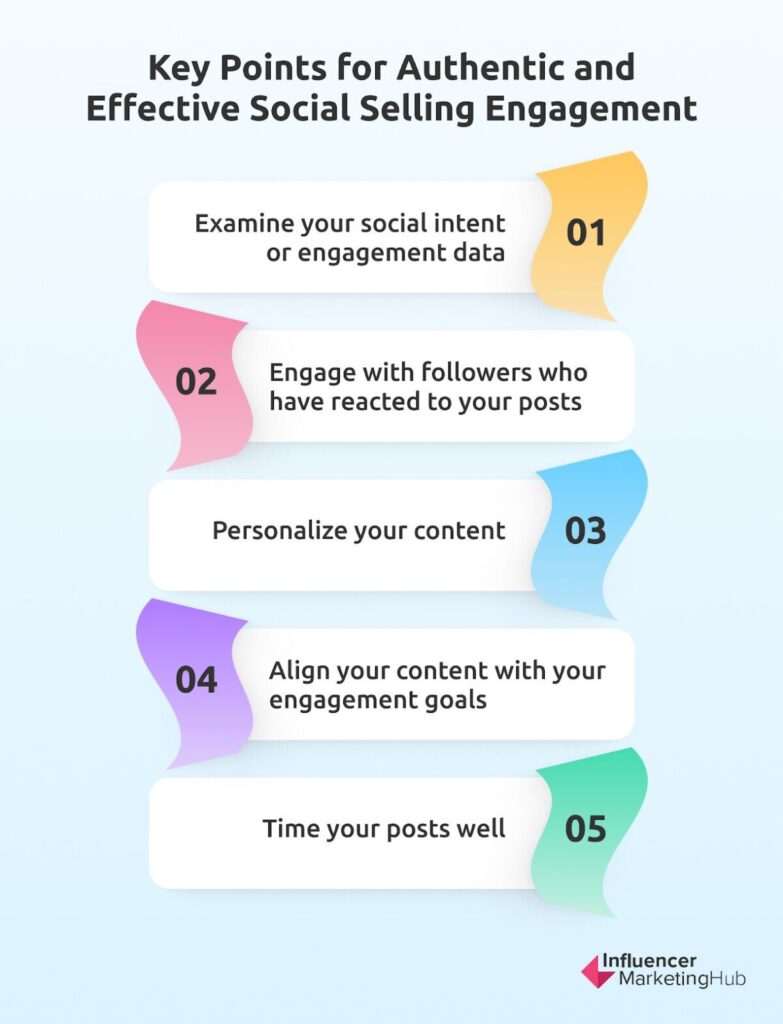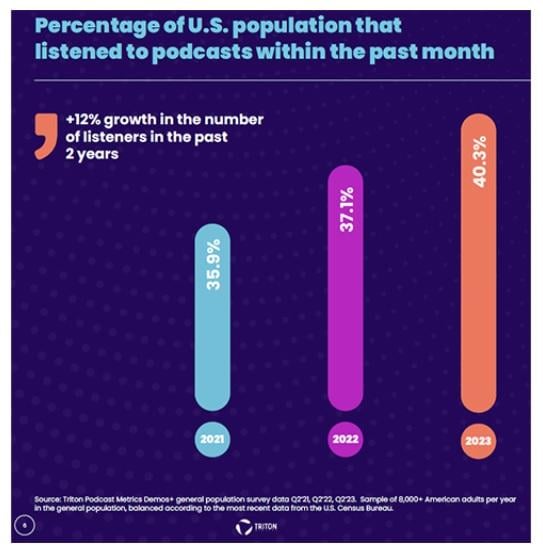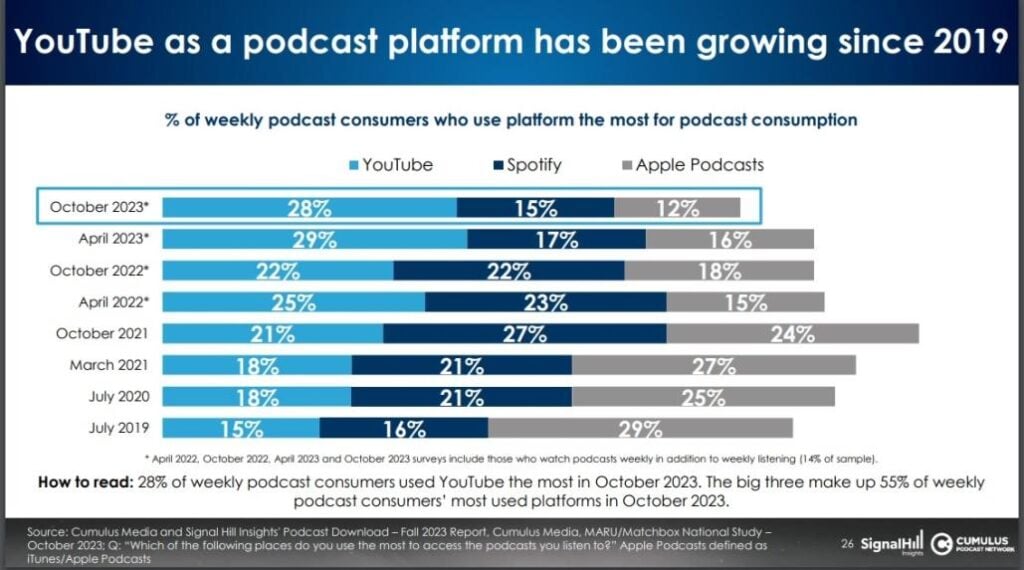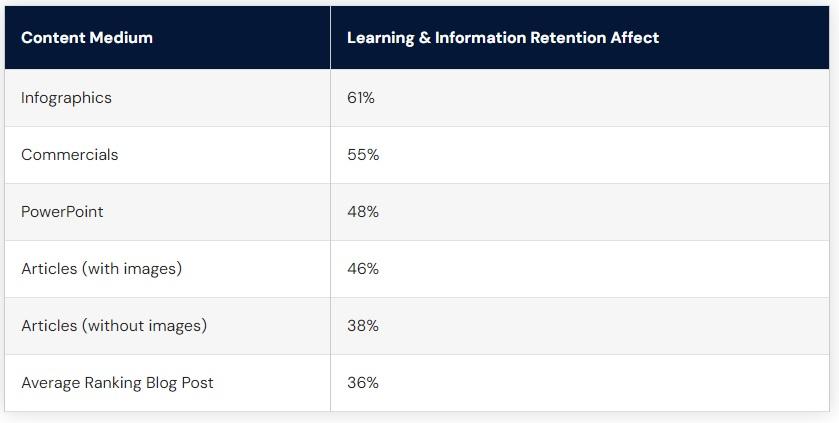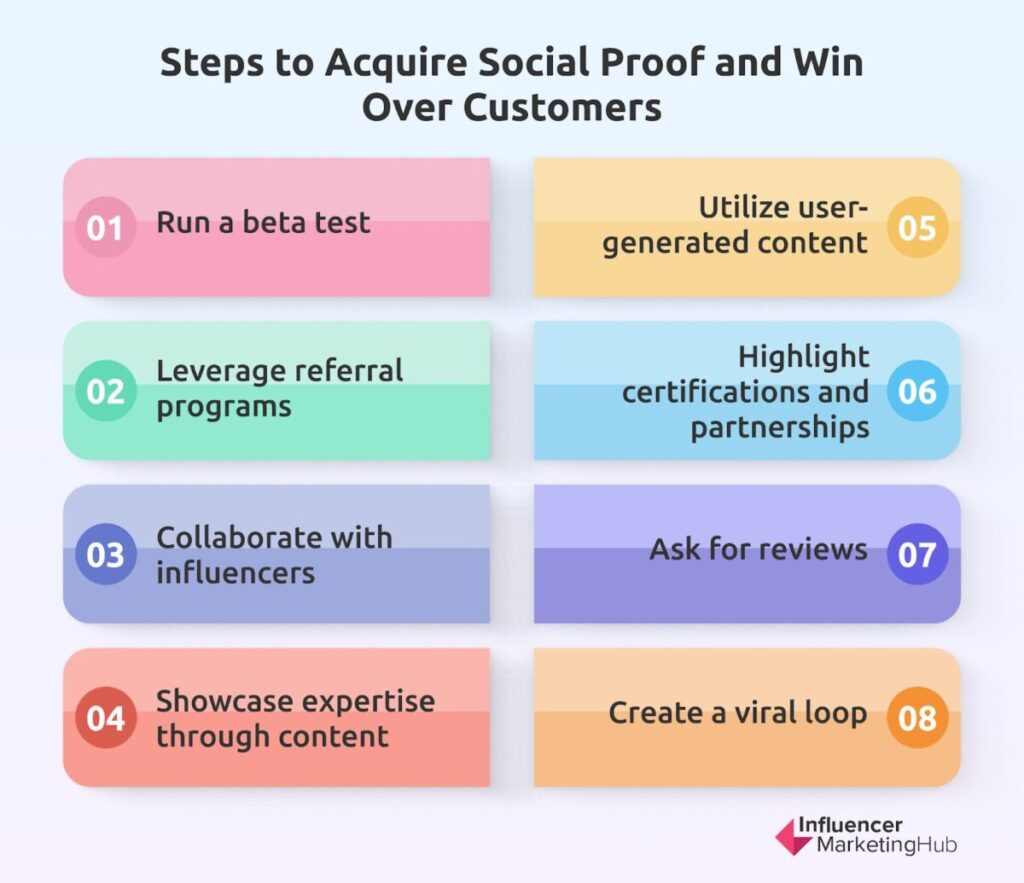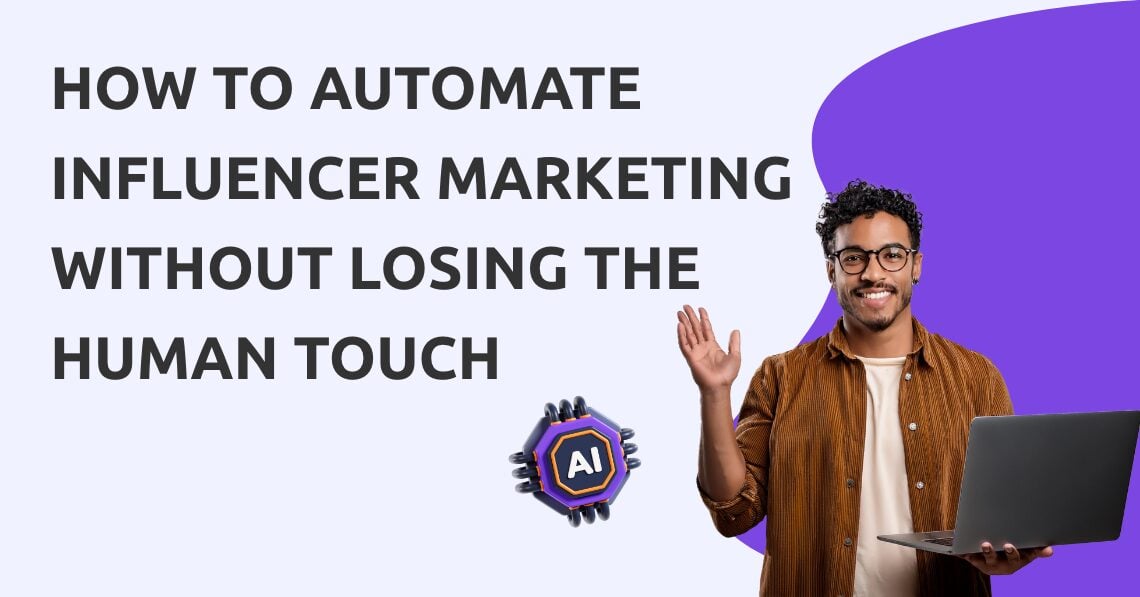Client acquisition strategies for digital marketing agency growth have become increasingly sophisticated with the rise of multiple communication channels and precision messaging in today's digital marketing landscape. Many have adopted tools like data analytics and AI amid the pressure to provide a seamless customer experience. Increased competition can be challenging as you try to stand out from other agencies.
This article will explore these challenges, present innovative methods to attract more digital marketing agency clients and share success stories that can inspire you to grow your agency.
- Pinpointing Challenges in Client Acquisition
- Unlocking Your Agency's Unique Value
- Harnessing Offline and Online Networking Strategies
- Redefining Cold Outreach
- Social Media Strategies for Client Engagement
- Tactics for Authentic and Effective Social Selling Engagement
- Content Marketing that Converts
- Building and Leveraging Social Proof Effectively
- Creating Compelling Case Studies
- Mastering the Art of the Pitch
- Utilizing Technology for Efficient Acquisition
- Success Stories: 5 Digital Marketing Agencies
- Time to Tune Up Your Superpowers
Pinpointing Challenges in Client Acquisition
Of the over 100 agencies polled by Agency Analytics for its 2023 Marketing Agency Benchmarks Survey, 37% said customer acquisition was their top challenge. Another report by Optimove found that 54% of agencies spend over 50% of their budget on customer acquisition.
What prevents agencies from acquiring digital marketing clients? Here are some common obstacles:
-
Decision paralysis
In a busy marketing world filled with various engagement options, determining how to reach your target audience can be challenging. Picking the most effective channels is difficult without analytics tools that show the effectiveness of your media efforts across the customer journey.
-
Resource allocation amid competition and rising costs
The number of digital marketing agencies in the US grew by 54% between 2018 and 2023, making it difficult to stand out in a crowded market. Advertising costs also continue to rise and the average customer acquisition cost is higher in more competitive industries such as real estate and higher education.

average customer acquisition cost
-
Lack of social proof
Social proof, which includes verified reviews, case studies, and user-generated content, plays a crucial role in building trust with customers. This trust stems from the positive experiences of customers with your brand which make other consumers feel more confident about doing business with you. 92% of B2B buyers rely on it before making a purchase. To convince other companies that you can contribute to their success, it's essential to present testimonials and case studies that highlight your past successes and results.
Unlocking Your Agency's Unique Value
After identifying your current struggles with client acquisition, review your unique selling proposition (USP). What sets your agency apart from others? Clearly articulating your USP helps your target audience understand how your solutions offer more benefits than those of other companies. Follow these four steps to develop an effective USP:
1. Know what your target market wants.
To better understand your customers, consider the following questions:
- What drives them to seek and engage with companies that offer similar services to yours?
- How can your services solve their problems?
- Why do your current clients choose your business instead of your competitors?
You could conduct interviews or surveys to identify which segments are attracted to your services, the tasks they need to accomplish, the needs they are struggling to meet, and the qualities they value in companies like yours.
2. Conduct competitor research.
Check how you stack up against other players in your niche so you can identify your strengths and weaknesses. This process also helps you identify gaps in the market that you can fill.
- To start, conduct a Google search of your service category and examine the Search Engine Results Page (SERP).
- Ask your potential customers about their current agency or their former agency partners.
- Visit the websites and social media accounts of these companies. You can learn from their strong points and add them to your current practices. Or you can find ways to outperform them.
- Check online reviews. Discover what their customers appreciate or dislike.
- Act like a customer to gather information (sign up for their email list or follow their social media accounts).
3. Develop your brand position.
Your USP should highlight the qualities that resonate with your target customers and make you stand out among other agencies.
How is your brand superior to others in the market?
Consider your USP with these aspects of your business:
- Services: niche market, personalization, a curated selection of goods or services, customer care
- Quality: seasoned team members, proprietary systems
- Price: low price, special offers
Niche specialization can attract clients with specific requirements and distinguish your agency from other potential service providers.
What's the greatest benefit my agency can offer?
Note that specific offers—discounts, 24-7 customer support, or "cancel anytime" policy—aren’t “benefits” per se because other agencies can offer them.
How can I prove that benefit?
Featuring testimonials and success stats on your website and social media channels provides social proof, enticing potential clients to consider your services.
4. Write and test your USP.
A USP formula you can try is:
“We help [AUDIENCE] achieve [TRANSFORMATION] with [SERVICE].”
Make various versions of your USP to determine which one resonates best with your customers via A/B or incrementality testing.
For example, Atypical focused on its niche market for its USP:
"We only do one thing... Real Estate Marketing... but we do it really well."
Meanwhile, Humbleteam highlights its service suite:
"Juicy digital-first brand systems, engaging & effective marketing websites & most lovable digital products."
Harnessing Offline and Online Networking Strategies
Participating in both in-person and online events is another strategic way to find new clients. These can provide you with opportunities to interact with companies that might be looking for your services. To find relevant events, consider platforms like Eventbrite, Meetups, and Facebook Events.
In-Person Networking Options to Find Your First Client
Although digital marketing refers more to online tactics, establishing a real-world presence can help bag your first client. You can try joining the following:
- Local business gatherings: meetings organized by the local chamber of commerce or location-based business associations.
- Informal meetups: work breakfasts/lunches or after-office-hour get-togethers involving marketing professionals or brands' marketing teams.
- Industry events: conferences, seminars, business expos, trade shows, and sponsorship events organized by professional marketing groups.
Leveraging Virtual Networking for Impactful Connections
To enhance your online presence and strengthen your connections, consider joining online groups or networks. However, before doing so, it's crucial to ensure your online profile is optimized. See our 7 optimization strategies for a guide, which includes writing a compelling and error-free copy and posting at the best times.
You can also consider the following tips:
- Become a member of professional groups (such as the American Marketing Association) and join their LinkedIn and other social communities.
- Search for forums (including Quora, Reddit) related to your niche or specific location.
- Post your services on job boards and freelance marketplaces, such as Upwork, which offer tips to make your profile stand out to clients.
- Place ads on search engines (Google or Bing) and social media (LinkedIn, Facebook, and Twitter)
Case Studies: These Agencies Grew Through Networking
Marketing veteran Shane McEvoy has reaped the rewards of networking. From spearheading the development of the UK's Yell.com business directory in the early 1990s, he established the multi-awarded financial marketing agency Flycast Media in 2009. In 2023, he set up Leadfly, a trades sector-focused agency that promises five qualified leads during the first signup month "or your money back." McEvoy believes that trying to "get something" out of networking during the first meeting is a misguided approach. Instead, he advocates for building authentic connections. He also believes that citation management or getting listed on Google My Business and other listings is vital to online visibility.
In an Upwork article, freelancer Zlatco B. wrote how he rose from a freelancer to an eCommerce agency owner. Understanding the value of building trust, he assembled a clear profile, a portfolio of previous projects, and personalized responses to posts. As he fulfilled more projects, reviews and past accomplishments fed the platform's algorithm to bring his name—and eventually his company—to the top of relevant searches.
Redefining Cold Outreach
Networking targets a market segment, while cold outreach focuses on building a relationship with an individual prospect within that segment.
How can you improve the conversion rate of your cold outreaches? Leave a good impression by personalizing communications during your initial contact. This approach shows that you're dedicated to providing value to your prospects. Here are some tips for personalization:
1. Research your audience and practice segmentation.
Invest time in understanding your target audience through research so you can tailor messages according to their pain points. Automated email tools can segment your contacts based on shared characteristics and schedule the timing and frequency of sending messages.
2. Pick the right time.
Our research shows that the ideal time to send emails is Tuesday at 10 am or 1 pm. Meanwhile, Yesware's study found that people were most receptive to cold calls from 3 pm to 5 pm on Tuesdays or Thursdays. Conversations reportedly lasted over five minutes.
While software allows you to set when and how often emails should be released, some manual checking and research are necessary. The same is true for cold calling. For instance, prospects are likely to decline your offer if their company recently closed a deal for the same service from your competitor. Using Google Alerts, watch out for "trigger events" or opportune moments such as:
- Company expansion to a new location.
- New executive hires who may be more open to new ideas than already entrenched company leaders.
- Funding that indicates a business has room to afford change or innovation.
- Large customer announcements or winning large contracts that allow you to start your call or email with a congratulatory message.
- Behavioral indicators, like the opening of a cold email because you increase your connect rate by 32% when you call prospects right after they open your email.
3. Carefully craft your introduction.
For cold emails: Making a click-worthy subject line is half the job of convincing prospects to read a cold email. Create suspense in your subject line or stir up your readers' need to improve or innovate. Then keep them engaged with an introduction that highlights their interests or challenges.
For cold calls: Leverage your words, starting from identity verification. Say "Am I talking with (x)?" instead of "Am I speaking to (x)?." The first version is more like a two-way conversation, while the second one sounds like you will merely broadcast your message whether they want to listen or not.
After introducing yourself, say strong opening sentences like:
"I'm inspired by the work you've done on ___"
"I saw your post on (platform) about ___" or "Great insights on ____"
"I noticed you manage ____"
"Congratulations on ____"
Yesware’s Pre-Call Research Checklist for discovery calls is also a useful preparation tool.
4. Align your pitch with the prospect's challenges.
You can choose from three methods. Cite specific solutions you've successfully provided for others with the same problems, show social proof, or share a special offer—such as a discount.
Check out our email marketing best practices and predictions to increase your chances of converting recipients to clients.
Templates
- For cold emails: Refer to our outreach email template when connecting with a prospective influencer. We also have a curated list of platforms offering various customizable templates.
- For cold calls: Your discovery call can flow like this:
Hello, (prospect's name). My name is (your name) from (company). How are you today?
I wanted to give you a quick call because we're working with a few companies similar to yours. I took a look at your website (domain name) and noted various points where our services could improve your (solution offer) and that's what we do. Do you have a few minutes to talk about the different ways we can help you get your (service offer) where you want it to be?
Also, you and your sales team can try video email marketing and voicemail to support cold calling, particularly when you can't make a live discovery call with your prospect.
5. Tap AI features for research and refine content.
AI-driven tools can support marketers and sales representatives in personalizing cold outreach messages. With ChatGPT, you only need to type in questions or prompts to discover your target audience's struggles or industry trends. You can also instruct it to generate attention-grabbing messages, which address your prospect's specific needs.
Social Media Strategies for Client Engagement
Social media's impact on customer acquisition cannot be overstated. In a survey by Insider Intelligence, US-based B2B marketers consider social media as the top vehicle for achieving top-of-funnel goals. As a result, 68% of marketers rely on this medium to convert prospects into customers.
Also, social media marketers consider lead generation among the primary metrics for gauging the success of their organic and paid campaigns.
We suggest the following steps to help you maintain and grow your social media followers:
- Polish your LinkedIn summary.
- Create a company page.
- Write great "hooks" with IMH's LinkedIn AI Post Generator.
- Know the best times to post.
- Use LinkedIn Pulse to widen your exposure to your target audience.
- Promote your activities on LinkedIn Events.
- Invite your team to share content.
- Learn to use LinkedIn's analytics.
- Create a video strategy using scheduling tools and Reel templates.
- Write engaging captions.
- Stir up interest in your profile/bio with Instagram Notes.
- Demonstrate thought leadership through Instagram Guides.
- Ask your followers to answer a survey.
- Follow influencers to gain exposure in more communities.
- Add music to your posts.
- Track your Instagram analytics.
- Get Facebook verified to improve credibility.
- Know when your target audience is most active on the platform.
- Post content that will give value to your followers.
- Promote your services on Facebook Stories.
- Form a Facebook Group.
- Link your Instagram account to your Facebook page.
- Get insights about your followers with Facebook analytics.
Tactics for Authentic and Effective Social Selling Engagement
As more B2B buyers use social media, you need a strategy to harness its potential and build a pipeline of high-quality leads. The objective is to create a dialogue, not merely to broadcast messages, aggressively sell services, or flood prospects' accounts with ads. This approach requires tact and finesse. Here are some key points to consider.
1. Examine your social intent or engagement data.
Examine how your followers are responding to your posts and campaigns by checking engagement data, such as clicks, likes, shares, and comments. You can subscribe to social media analytics platforms to quickly view these real-time data for each of your official channels. Discover the messages or content that had the most and least appeal to your audience, and identify any patterns.
Some analytics tools have built-in social listening features, which enable you to dive deep into the theme of your followers' conversations. The terms they use indicate their pressing needs:
- Assistance: Words like "help," "tips," "recommend," and "ideas" hint that a prospect wants some answers about something they would be interested in buying.
- Location: The mention of geo-specific terms may help you find potential buyers nearby.
- Industry: Words specific to your service or industry show awareness, indicating a level of buying intent.
- Transaction readiness: "Cost," "price," and "sale" suggest one's budgetary concerns but the willingness to buy.
- Brand mentions: Direct mentions of your brand can signal the right time to engage a prospect in conversation and offer solutions.
2. Engage with followers who have reacted to your posts.
Use your engagement data to discover your most promising leads. Focus your efforts on prospects who have shared or commented on your posts.
You might appear pushy if you send messages to those who haven't engaged with your past content. To avoid being considered invasive, start with "light" social interactions: like their comments, add them to your favorites, or retweet their messages.
3. Personalize your content.
Understanding the problems of your followers is the first step to proving your genuine interest in finding solutions for them. Follow through by tailoring your message to meet their specific needs. Because these content types sound less intrusive, you can establish trust and focus on relationship-building instead of making a sale outright. Social selling is a long game, so get to know your prospects and let them get to know you.
4. Align your content with your engagement goals.
Besides answering your prospects’ questions, create content that tells what your brand can do for them. Audience research software can deepen your knowledge of what they want to know about your brand. The content of your post should depend on your engagement goals, which could be any of the following:
- Educating them with resources or advice
- Developing new leads
- Collecting feedback about new products
- Changing the public's perception of your brand
- Showing your brand's human side (by responding to comments with warmth and humor and posting content showcasing people behind the brand)
5. Time your posts well.
Increase customer satisfaction by answering queries or commenting on feedback promptly. Automated tools can save templates for answers or suggest replies to similar questions based on your past responses. Also, use a social media calendar where you can plot the most optimal days and times to publish your content.
Content Marketing that Converts
Another key to acquiring digital marketing agency clients is to go above and beyond text-based content. Although blogging is still a fantastic way to build connections, you can try innovative alternatives if writing isn't your thing or if you want to enhance your blog.
Podcasting
Podcasting is worth a try if you're not keen on writing long-form content or talking to the camera. A little over 40% of Americans listened to podcasts in 2023, with news, crime, and comedy topping the most popular genres.
This format takes less effort to produce than vlogs. Moreover, your target market can tune in anytime, anywhere. Ironically, a growing number of listeners go to YouTube to access podcasts, making it a popular platform alongside Spotify and Apple Podcasts.
Our podcast marketing guide lists 19 strategies for podcast marketing. We suggest the following to widen your exposure and engagement opportunities:
- Create great content. We enumerate 40 best podcast topic ideas in a separate article.
- Get listed on podcast directories, such as Google Play, Apple Podcasts, and iHeartRadio.
- Invite guests, including experts in your field, and appear on other podcasts.
- Promote your podcast on social media.
Webinars
Over 70% of people who attend B2B webinars become qualified leads. Moreover, 15% of participants end up purchasing a product or service. Follow these steps at each stage of the webinar.
Before:
- Create attractive registration pages featuring your agenda, highlights, and list of speakers.
- Research your audience's interests by including some of these questions in the sign-up form:
- What specific challenges or questions do you expect the webinar to address?
- What are your current goals related to (the topic or industry)?
- How would you describe your familiarity or experience level with (the topic/industry)?
- Promote your webinar through social media, email, a landing page, ads, or influencer/industry expert collaboration. When working with another party, coordinate promotion efforts, sharing discount codes or affiliate links to incentivize them to "plug" your webinar. Your email marketing campaign should include a post-registration email containing more information about the speakers or topic. Then, follow it up with a reminder one week before the webinar (with an outline of the agenda) and a concise reminder the day before the event.
- Use engaging visuals and interactive elements to capture and retain attention. Ensure any caption or text is concise and easy to read. Use your brand colors for fonts and backgrounds to reinforce your business identity.
- Pick a platform with features that will meet your requirements and goals, including your budget and expected audience. Familiarize yourself with its features so you can transition seamlessly as you share content. Rehearse to test interactive tools, including whiteboard features.
During:
- Invite listeners to use the chat so you can get instant feedback and then manage the online conversations.
- Encourage interaction by using polls, breakout rooms, and a call-to-action at the end.
- Share digital handouts or additional resources so you can add value beyond your topic proper.
After:
- Connect with participants after the webinar by sending a summary, a link to the webinar video, or a presentation file.
- You can also give a "gift," such as a free eBook, discount code, or early access to new services or features.
Infographics
Because visuals are more stimulating than plain written text, infographics are more likely to be seen and remembered than a blog post. Their learning and information retention effect is the highest (61%) among various content in Search Logistic's list, which also includes commercials (55%), Powerpoint presentations (48%), and articles with images (46%).
In our separate article about promoting infographics, we discuss in detail how you can use this form to increase engagement by:
- Submitting it to infographic directories
- Creating a short snippet describing your infographic when sharing it on social media
- Sharing it on forums and communities
- Pitching it to bloggers and influencers
SEO: You've Got This!
If you know what it takes to improve your client's search engine ranking, you can do the same for your agency's online presence. Re-evaluate your SEO strategy by examining your website’s performance. Use rank-tracking tools for keyword monitoring. Optimize your site around keywords and topic or content clusters to establish authority on a subject.
Also, ensure that your agency ranks well in local searches. More importantly, stay updated with search engine algorithm changes—including Google's Search Generative Experience SEO—and adjust accordingly. Don’t forget to apply SEO on YouTube and other social media by optimizing your profiles, including social sharing buttons on your site, and integrating relevant keywords into your messages.
Building and Leveraging Social Proof Effectively
It’s not enough to produce impressive content that shows potential clients how talented your agency is. Prospects want to know how trustworthy your brand is. You can take these steps to acquire social proof and win more customers:
1. Run a beta test.
Offer your services for free or at a discounted rate to selected clients in exchange for their feedback and testimonials.
2. Leverage referral programs.
Implement a referral program to encourage word-of-mouth marketing. Satisfied clients who refer others to your agency can serve as a form of social proof.
3. Collaborate with influencers.
Partner with influencers or industry experts to drum up your agency's capabilities and gain credibility.
4. Showcase expertise through content.
Create valuable content such as blog posts, case studies, or whitepapers demonstrating your knowledge and expertise in digital marketing. This can build trust with potential clients even before you have formal testimonials.
5. Utilize user-generated content.
Encourage clients to share their experiences with your agency on social media. User-generated content can show prospective clients the real-world impact of your services.
6. Highlight certifications and partnerships.
If you have any industry certifications, awards, or partnerships, display them prominently on your website and marketing materials to serve as trust signals.
7. Ask for reviews.
Request reviews from clients after completing projects. Even a small number of positive reviews—at least three—can convince prospects to consider your services.
8. Create a viral loop.
Give people a reason to spread the word about your content or services. This can amplify your reach and build social proof through the network effect.
Creating Compelling Case Studies
Case studies show prospects what they can expect from working with your agency. They can also highlight your ability to deliver effective solutions despite challenges. The following case study elements can help persuade your website subscribers or social followers to choose your company over others:
- A results-driven headline
- Client introduction and project overview
- Challenge (or the client's problem and desired results)
- Strategy (details on the tactical and creative steps to overcome the problem and achieve client goals)
- Results (with accurate, verifiable figures)
- Visuals (charts, videos, images)
- Testimonial or client feedback
- Lessons learned and internal links to other case studies
- Call to action (CTA) encouraging readers to contact you for a free consultation
Here are the steps to produce a case study:
- Select a campaign or project that will highlight your success and resonate with your target audience.
- Get your client's permission to discuss the campaign you did for them.
- Make the case study read like a story by defining your client's problem and why they chose you to solve it.
- Outline your client's goals, requirements, and metrics.
- Describe your strategy in detail, providing the rationale behind your decisions.
- Cite the specific actions you took to help readers understand how you work.
- Gather feedback from your team members and clients to analyze the outcomes of your strategy.
- Highlight your agency's specific strengths demonstrated in the project.
- Promote your case study on your website, social channels, and email.
- Use a CTA asking readers to explore your other resources or to call you for more information.
Mastering the Art of the Pitch
You know that your marketing campaigns have made a positive impact on your target audience when you’re invited to make a sales pitch. Sales pitches are presentations that highlight the value and benefits of your product or service, positioning it as the best solution for your prospect's needs. Considering that 87% of business buyers expect sales representatives to act as trusted advisors, it's vital to include these critical elements in your pitch:
- Market insight, particularly a thorough understanding of your prospect's business, to personalize your sales "hook" and build rapport based on a shared understanding.
- A clear value proposition explaining your proposed strategy to deliver a solution that nobody else can.
- Compelling storytelling, which includes case studies of past accomplishments to show prospects what you’re capable of. Use images, videos, graphs, and videos to clarify your pitch.
- Budget and timeline details breaking down your workflow and proposed pricing for transparency.
- A call to action guiding prospects toward the next step in their customer journey.
If your prospect isn't ready to sign up for your services, build a relationship with them until they are. Transactions with nurtured leads' are worth 47% higher than those with non-nurtured leads.
As part of full-funnel marketing, lead nurturing is targeting "future customers." It keeps you top of mind so that prospects turn to you once they're ready to tap your agency. It involves implementing personalized messaging in omnichannel communications, conducting surveys, content marketing, and SMS and email marketing. The following steps can help you develop a lead nurturing strategy for your agency:
- Create a lead profile listing your ideal customer’s demographic information, buying habits, pain points, and interests.
- Communicate with leads in their preferred channels.
- Acquire and use nurturing tools, such as customer relationship management (CRM) systems, automation tools, and lead-scoring software.
Utilizing Technology for Efficient Acquisition
For your agency to have a steady stream of engagements, you must be equipped with the necessary technology to manage your projects. Having the right tech stack empowers your people, workflow, performance, and outcomes. Although digital marketing companies have various specializations, every toolkit must have the following:
- CRM software and AI-powered customer data platforms
- Marketing automation tools for project management, content management, social media management, and email marketing
- Data analytics for analyzing website performance and campaign effectiveness
Success Stories: 5 Digital Marketing Agencies
Here are 5 real-life examples of agencies that nailed their client acquisition strategies at the start to achieve long-term sustainability:
1. Madwire
Madwire, co-founded by JB Kellogg, began when Kellogg recognized his talent for website design while interning at a travel magazine company. He and his father started the agency, which has grown to over 500 employees and generates $102 million per year. The company's success was driven by identifying a market need for helping businesses grow through digital marketing and leveraging Kellogg’s skills in website design.
2. DSM
Darren Magarro started DSM, a full-service marketing and PR firm, from his porch with just a laptop and IKEA furniture. His agency has grown to an 18-member staff and achieved 334% growth since 2014. The agency combined traditional media with organic and paid digital media and harnessed its full-service creative team to offer a comprehensive range of services.
3. Article-Writing Co.
David Tile founded Article-Writing Co. after a failed attempt to start a penny auction website. He turned to freelance writing, eventually building a successful content writing service. The agency's success came from identifying a niche in content creation and leveraging Tile's writing skills to serve businesses, leading to $1.5 million in revenues per year.
4. Ladybugz Interactive Agency
Lysa Miller started Ladybugz Interactive Agency during the pandemic. It quickly became a top web design and digital marketing agency for biotech companies and startups. Her success began when she focused on her strengths in web design and search marketing to expand the agency. By prioritizing marketing and using her expertise, the agency experienced rapid growth, particularly with women-owned and local businesses.
5. Beardbrand
Eric Bandholz established Beardbrand without selling any products, initially writing blog posts and creating YouTube videos about beard care. This content marketing strategy built a sizeable and invested audience. When Beardbrand launched its first products, it already had a significant following, which translated into sales. The key to their success was creating quality content that engaged the audience before even having products to sell.
Time to Tune Up Your Superpowers
Amid tight budgets and economic uncertainties, clients need assurance that their agency partnerships will have a good ROI. Auditing your services across the specific marketing programs discussed in this article can improve your performance. To summarize, you can be more effective in acquiring digital marketing agency clients by:
- Identifying your customer acquisition challenges
- Emphasizing your unique value
- Joining networking opportunities
- Expanding your cold outreach methods
- Reviewing your social media strategy
- Trying alternative content marketing methods, such as podcasts and webinars
- Leveraging social proof
- Mastering the art of the pitch
- Investing in automation and technology
Conduct a comprehensive audit annually—or quarterly and even weekly for more competitive industries—just as you would advise clients. Direct your analytics software toward campaigns that promote your agency to see where you can improve client management, increase team productivity, and use technology more effectively.


